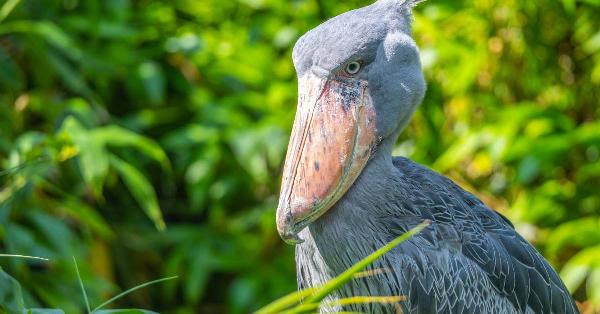The Ugliest Birds in the World: Exploring Nature's Quirkiest Creations

Strong 8k brings an ultra-HD IPTV experience to your living room and your pocket.
Birds are often celebrated for their grace, beauty, and colorful plumage. However, just like in any other aspect of nature, diversity reigns supreme, and there are some avian species that stand out for their unconventional appearance. In this article, we'll take a fascinating journey through the world of birds to discover some of the most peculiar and, dare we say, ugliest birds in existence.
1. The Marabou Stork (Leptoptilos crumeniferus)
Native to Africa, the Marabou Stork is a sight to behold, though perhaps not for its aesthetic appeal. With its bald head, wrinkled neck, and long, spindly legs, this scavenger bird certainly doesn't fit the traditional definition of beauty. However, its unique appearance serves a purpose in nature, allowing it to thrive in its scavenging lifestyle, feeding on carrion and waste.
2. The California Condor (Gymnogyps californianus)
While the California Condor holds the title of the largest flying bird in North America, its appearance is far from majestic. With a bald head, wrinkled neck, and a wingspan of up to 10 feet, this vulture-like bird is often considered unattractive by human standards. Despite its less-than-appealing looks, the California Condor plays a vital role in its ecosystem as a scavenger, helping to clean up carrion and prevent the spread of disease.
3. The Shoebill (Balaeniceps rex)
Native to the swamps of central tropical Africa, the Shoebill is a bird that looks like it stepped out of a prehistoric era. With its massive, shoe-shaped bill and piercing stare, this bird is both bizarre and captivating. While some may find its appearance off-putting, the Shoebill's unique features are perfectly adapted to its hunting style, allowing it to catch fish with precision in the murky waters of its habitat.
4. The Andean Condor (Vultur gryphus)
Another member of the vulture family, the Andean Condor is known for its impressive size and scavenging habits. With a wingspan that can exceed 10 feet and a bald head adorned with fleshy wattles, this bird cuts an imposing figure in the skies of South America. While its appearance may not be conventionally attractive, the Andean Condor is revered in many cultures as a symbol of power and freedom.
5. The Bald Uakari (Cacajao calvus)
Moving away from the realm of avian species, the Bald Uakari is a primate native to the Amazon Rainforest. With its bright red face and bald head, this monkey certainly stands out in the dense foliage of its habitat. While its appearance may seem strange to us, the Bald Uakari's unique features are thought to play a role in social signaling and mate selection within its species.
6. The Vulturine Guineafowl (Acryllium vulturinum)
With its striking blue face, spiky crest, and long, slender neck, the Vulturine Guineafowl is a bird that commands attention. Native to the dry savannas of northeast Africa, this unusual-looking fowl is often considered one of the ugliest birds in the world. Despite its less-than-appealing appearance, the Vulturine Guineafowl is a highly social bird, often seen in large flocks roaming the African plains in search of food.
7. The Southern Ground Hornbill (Bucorvus leadbeateri)
With its large size, black plumage, and striking red facial skin, the Southern Ground Hornbill is a bird that certainly stands out in the African savanna. While its appearance may seem intimidating to some, this majestic bird plays a crucial role in its ecosystem as a top predator, feeding on a variety of small animals and helping to control populations of pests.
Conclusion
In conclusion, while beauty may be subjective, there's no denying that the avian world is home to some truly unconventional-looking creatures. From the bald heads of vultures to the shoe-shaped bills of Shoebills, these birds remind us that nature's diversity knows no bounds. While they may not win any beauty contests, these unique species serve important roles in their ecosystems, highlighting the interconnectedness of all living things on our planet.
Note: IndiBlogHub features both user-submitted and editorial content. We do not verify third-party contributions. Read our Disclaimer and Privacy Policyfor details.







